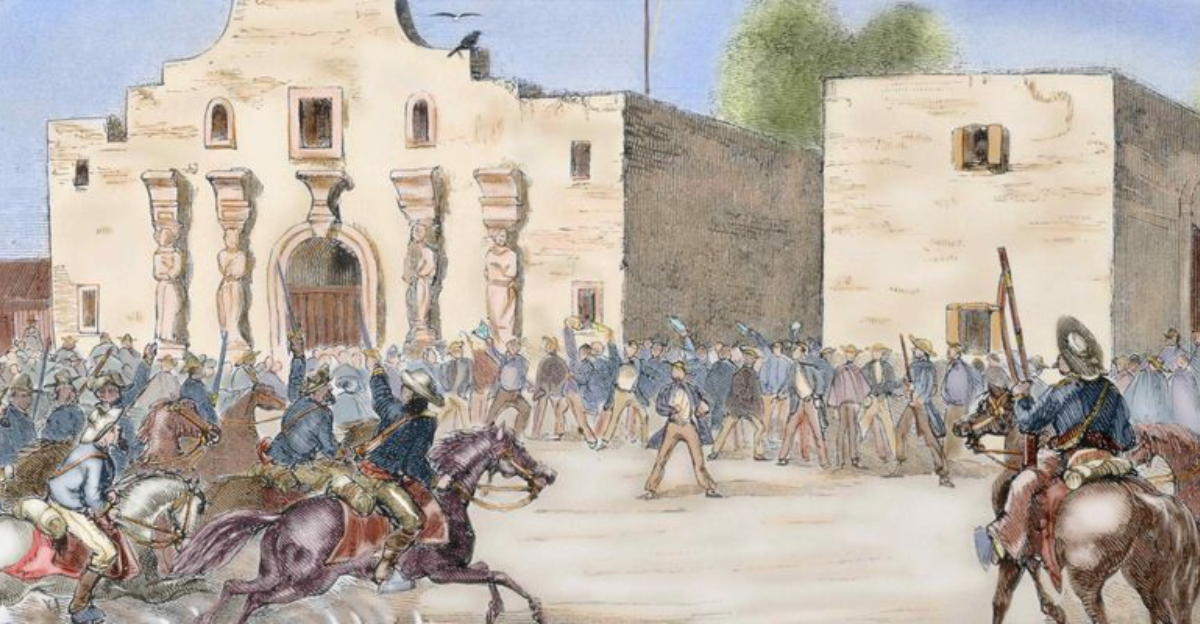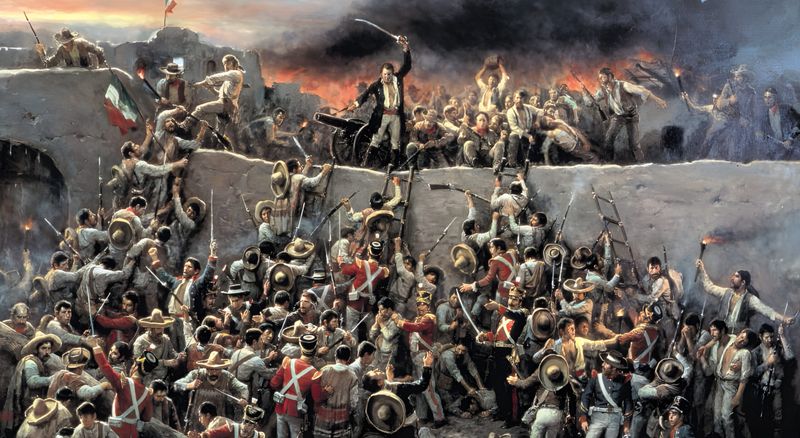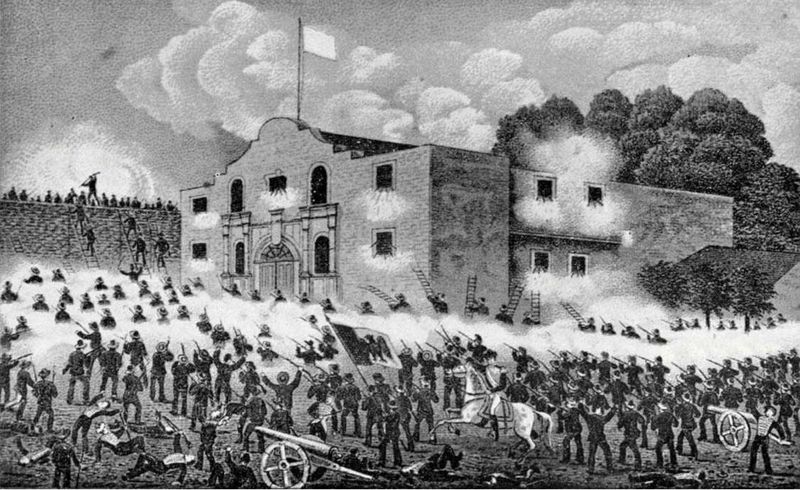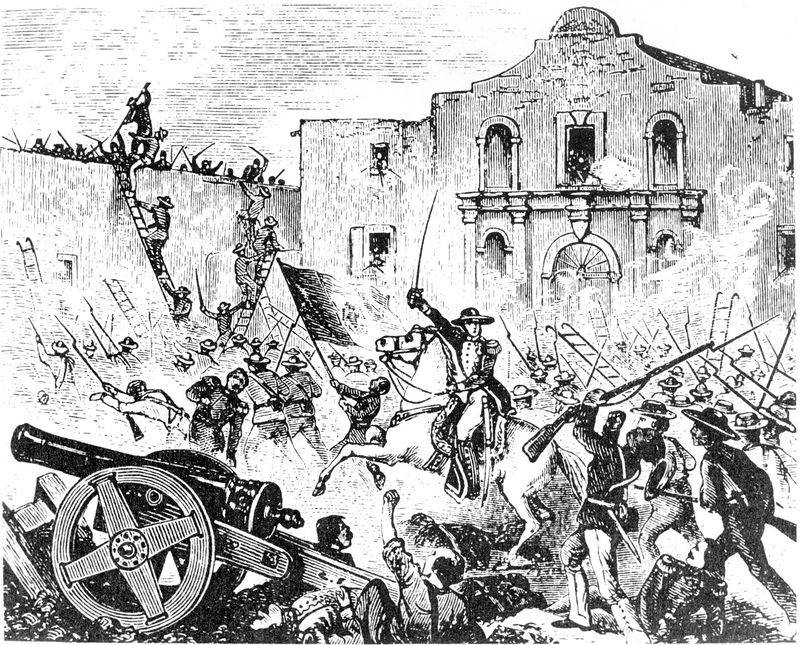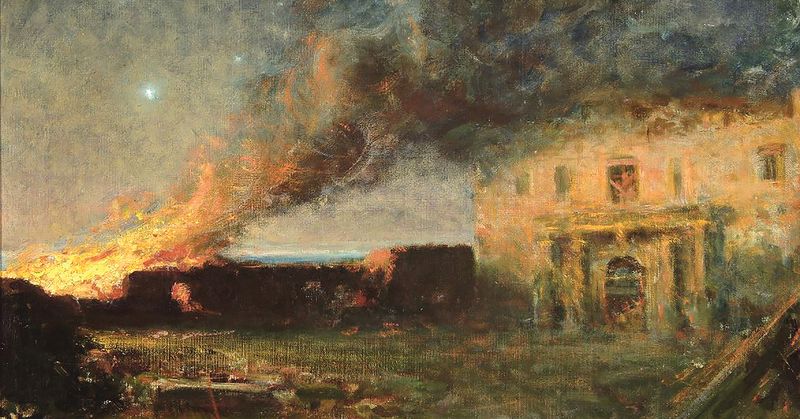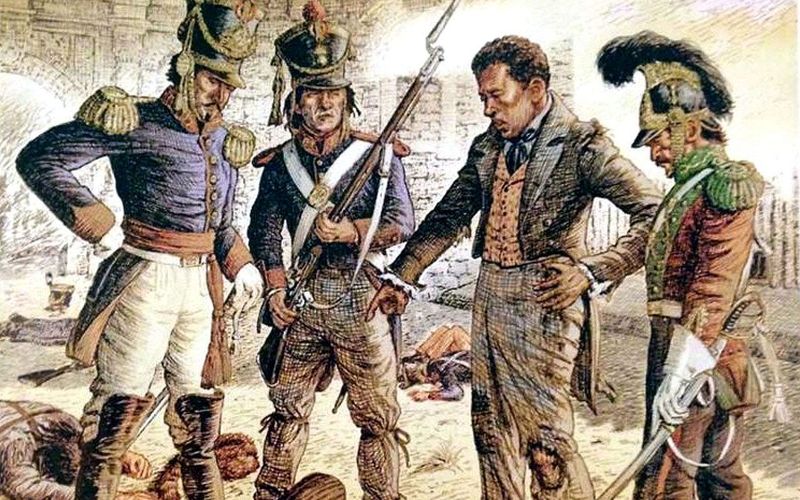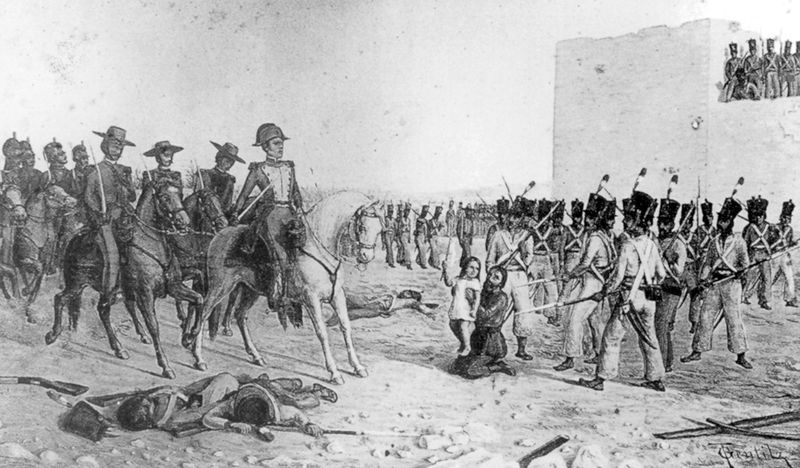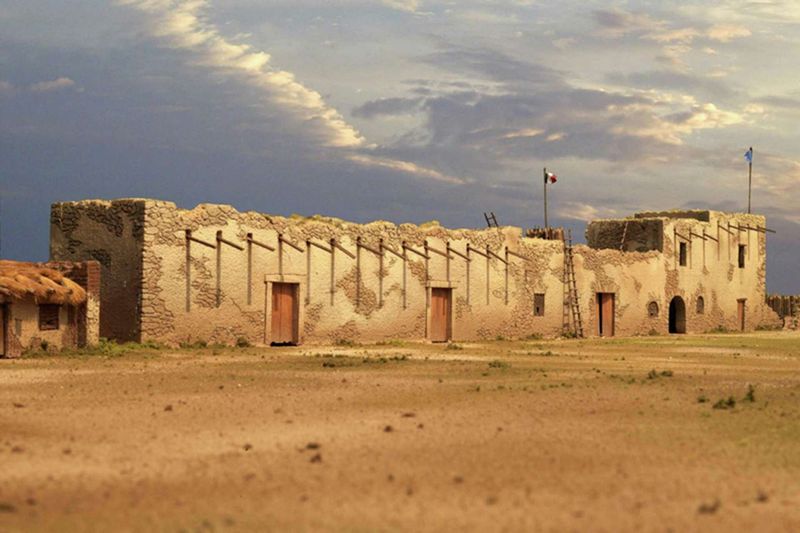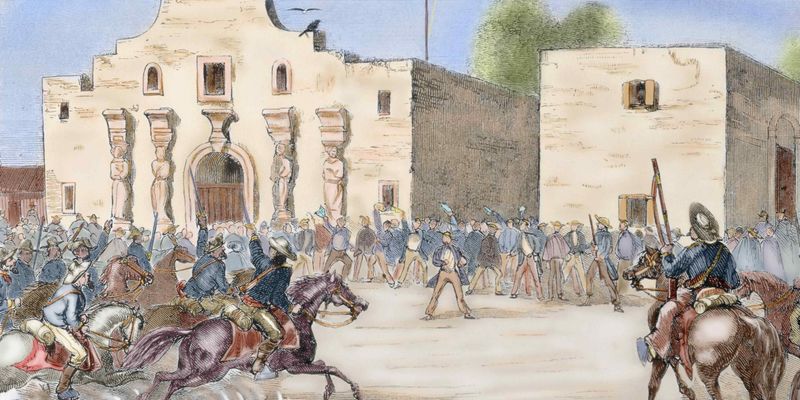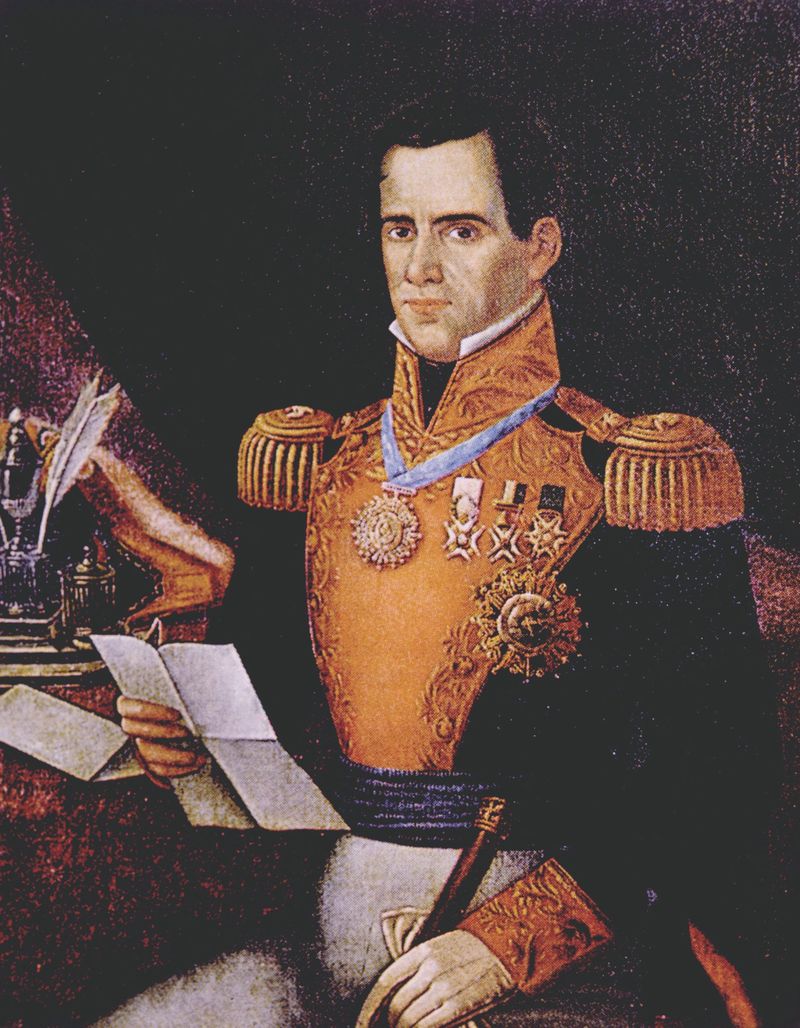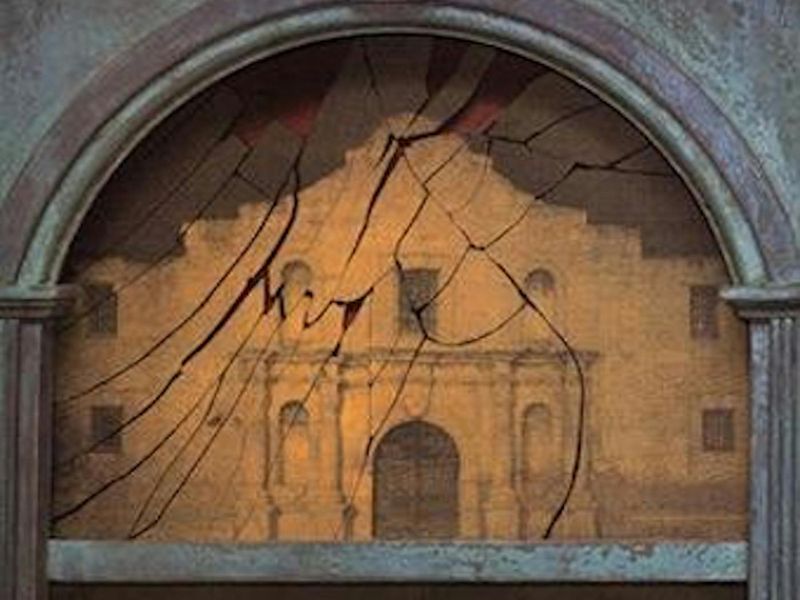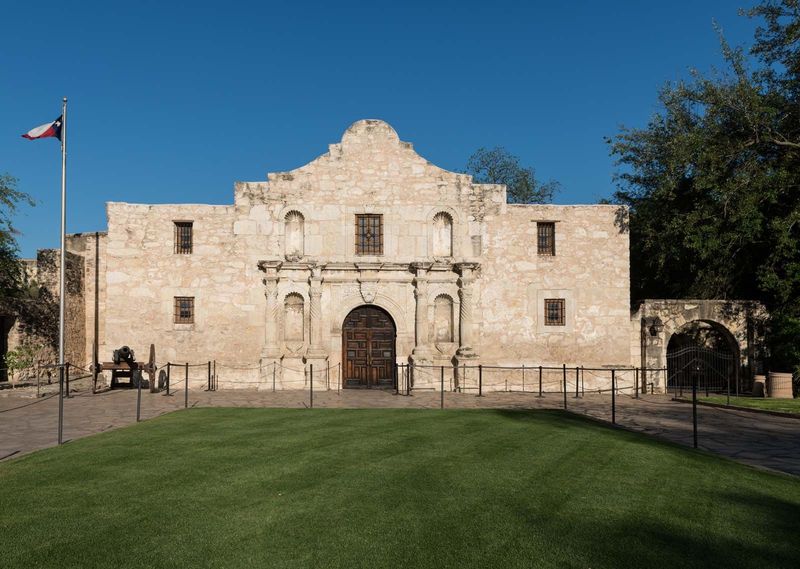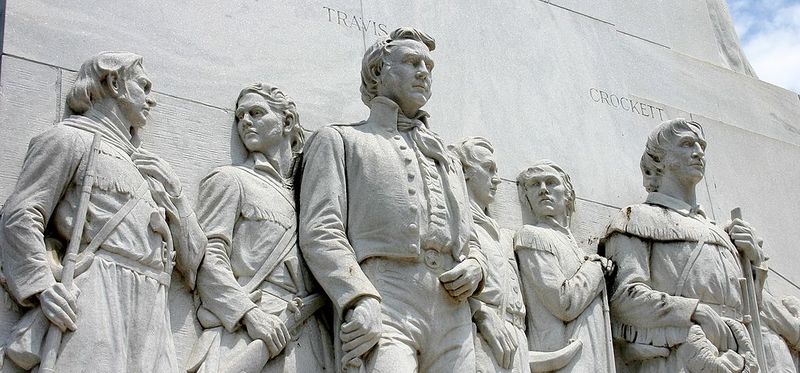The Battle of the Alamo is a legendary chapter in American history, but behind the heroism lies a series of strategic blunders that sealed its bloody fate. Here are 13 critical mistakes—some human, some political—that turned the Alamo into a tragic last stand.
1. Underestimating Santa Anna’s Determination
Santa Anna’s steely resolve was underestimated. Texian leaders couldn’t fathom the Mexican president marching his army in winter. Yet he did, fast and furious, catching them off guard. His unexpected advance through harsh weather displayed his unyielding determination. Underestimating this iron will led the Texians to a fatal misjudgment, leaving them unprepared for the swift siege that followed.
Santa Anna’s rapid march symbolized his relentless pursuit, a quality that should have been foreseen as a significant threat. Ignoring this reality sealed the Texians’ fate, exemplifying a critical oversight in strategic planning.
2. Choosing the Alamo as a Defensive Position
The Alamo, though historic, was architecturally flawed for defense. Its wide walls and open spaces made it vulnerable, not a stronghold. Once surrounded, the defenders were easy targets for Santa Anna’s forces. Choosing this as a defensive position was a strategic blunder.
This decision reflected a misunderstanding of military architecture, where the romanticized symbolism of the Alamo overshadowed its practical inadequacies. The Texians’ choice prioritized tradition over tactical advantage, leading to a disastrous entrapment.
The Alamo’s iconic status couldn’t compensate for its inadequacies, turning it into a death trap rather than a fortress.
3. Spreading Texian Forces Too Thin
A classic error in military strategy: spreading forces too thin. Texian commanders scattered their troops across distant outposts, diluting their strength. This left the Alamo undermanned, with inadequate support to withstand the siege.
This scatterbrained deployment reflected a lack of centralized strategic vision, undermining their ability to defend crucial positions effectively. The dispersion made the Texian army vulnerable, unable to mount a concerted defense when faced with Santa Anna’s concentrated assault.
The failure to concentrate forces illustrates a grave misunderstanding of tactical deployment, weakening their overall defensive capability and sealing the Alamo’s fate.
4. Failing to Destroy the Alamo Before Abandonment Was Proposed
Indecision and pride held sway over strategic prudence. Some leaders, such as Sam Houston, argued for abandoning and destroying the Alamo to prevent it from falling into enemy hands. However, internal dissent delayed this crucial decision.
This hesitation allowed Santa Anna to overrun the Alamo, turning it into a symbol of Texian defiance and failure. The inability to act decisively meant that the Alamo remained a focal point of resistance, ultimately leading to its downfall.
The Texians’ failure to destroy the Alamo reflects a strategic blunder rooted in personal pride and political indecision, sealing their tragic fate.
5. Lack of Unified Leadership
Command chaos reigned at the Alamo. Leadership was divided between William B. Travis and James Bowie, creating a rift at a time when unity was vital. Their conflicting authority led to confusion and delayed critical decisions.
This lack of a unified command structure undermined the defense efforts, leaving the garrison in disarray. In the heat of battle, clarity and decisive leadership are essential, yet this was lacking at the Alamo.
The internal leadership conflict illustrates how divided command can cripple effective defense, contributing significantly to the Alamo’s tragic end.
6. Ignoring Intelligence on Mexican Troop Movements
Ignoring intelligence can be fatal. Valuable reports about Mexican troop movements were either dismissed as exaggerations or delayed in transmission. This oversight meant reinforcements weren’t requested until it was too late.
Underestimating the enemy’s capability and dismissing credible intelligence left the defenders vulnerable to surprise attacks. Proper attention to these warnings could have altered the defensive strategy significantly.
This critical misjudgment of intelligence reports reflects a broader failure in strategic planning, contributing to the swift and overwhelming siege of the Alamo.
7. Insufficient Supplies and Ammunition
Shortages of food, water, and ammunition plagued the Alamo defenders. Once surrounded, resupply became impossible, turning their struggle into a countdown. Survival hinged on these critical resources, yet they were lacking.
This logistical failure underscored the dire situation faced by the defenders. Without adequate supplies, their ability to hold out against the siege was severely compromised.
The lack of sufficient provisions highlights a fundamental oversight in preparation, leaving the Texians in a vulnerable position as Santa Anna’s forces closed in.
8. Overconfidence in Reinforcements
Hope can be deceptive. The defenders at the Alamo believed that reinforcements from nearby Texian units were imminent. This overconfidence proved fatal, as communication failures and conflicting orders left them isolated.
The expectation of aid created a false sense of security, leading to complacency in defensive preparations. As Santa Anna’s forces advanced, the harsh reality of their isolation set in too late.
This misjudgment in expecting reinforcements reflects a critical error in strategic planning, contributing to the Alamo’s ultimate downfall.
9. Santa Anna’s Ruthless Assault
Santa Anna’s tactics were unyielding. Ignoring norms of mercy, he launched a full-scale assault rather than opting for siege tactics. The result was a brutal massacre that shocked the world.
His relentless approach left no room for negotiation or surrender, overwhelming the defenders with sheer force. This unexpected intensity caught the Texians unprepared for such brutality.
Santa Anna’s ruthless assault serves as a stark reminder of the importance of anticipating an adversary’s unpredictability, highlighting the defenders’ lack of readiness for such ferocity.
10. Failure to Fortify Weak Points in the Wall
Walls can be deceptive. Several breaches in the Alamo’s defenses were never fully reinforced, providing easy entry points for Santa Anna’s forces. This oversight allowed the enemy to exploit these gaps effectively.
The failure to fortify weak points highlighted a critical lapse in defense preparations. It reflected a complacency and overreliance on the presumed strength of the Alamo’s walls.
This miscalculation demonstrated a significant underestimation of Santa Anna’s tactical acumen, turning the Alamo’s defenses into liabilities rather than strengths.
11. Overestimating Texian Morale and Firepower
Belief in spirit alone can be misleading. The Texian defenders, though brave, were exhausted and outgunned. Overestimating their morale and firepower against a well-equipped enemy proved to be a fatal error.
This misjudgment created a false sense of superiority, leading to underpreparedness in face of Santa Anna’s assault. Confidence in their spirit couldn’t compensate for the lack of reinforcements and resources.
The overestimation of morale highlights a critical flaw in understanding the balance between courage and capability, contributing to the Alamo’s tragic end.
12. Bowie’s Illness Removing Key Leadership
James Bowie’s illness was a critical blow. Falling ill during the siege, Bowie left William B. Travis in sole command. The absence of his leadership weakened internal unity and morale among the defenders.
Bowie’s incapacity highlighted the fragility of command structures dependent on individual leaders. His illness left a leadership vacuum at a crucial time.
This unexpected setback exemplifies the impact of unforeseen personal circumstances on strategic defense, further destabilizing the Alamo’s resistance efforts.
13. Political Infighting Among Texian Leaders
Political discord exacerbated military struggles. Disagreements among provisional government factions delayed crucial decisions while Santa Anna acted swiftly. This infighting diverted focus from addressing immediate threats.
The lack of cohesive strategy due to political bickering weakened the Texian response to the advancing Mexican forces, highlighting how internal politics can undermine military effectiveness.
This infighting serves as a cautionary tale of the dangers of political division during crises, contributing to the Alamo’s tragic end.
